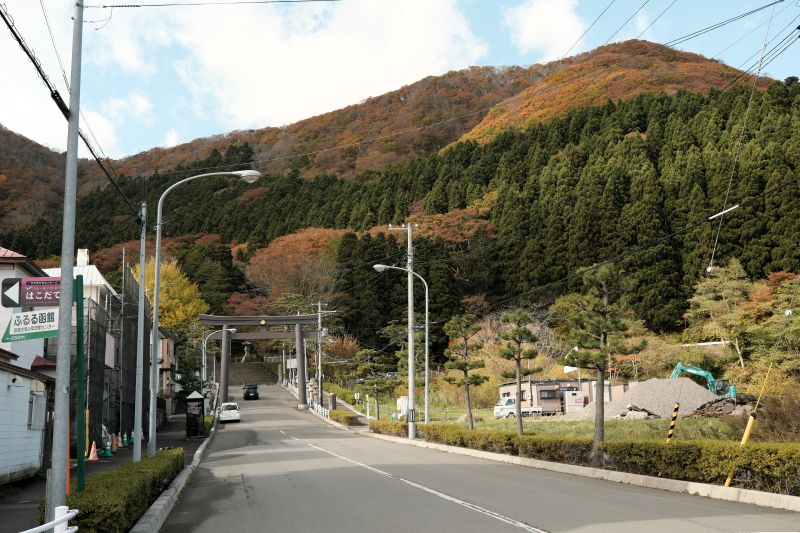
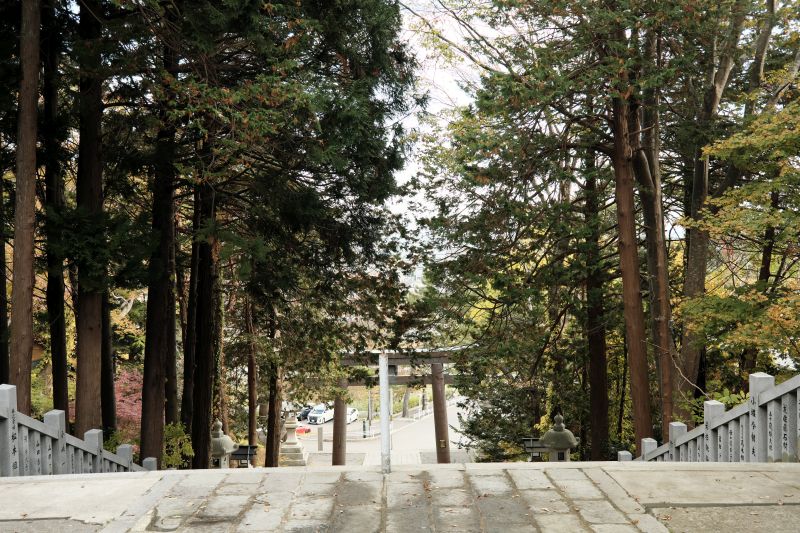
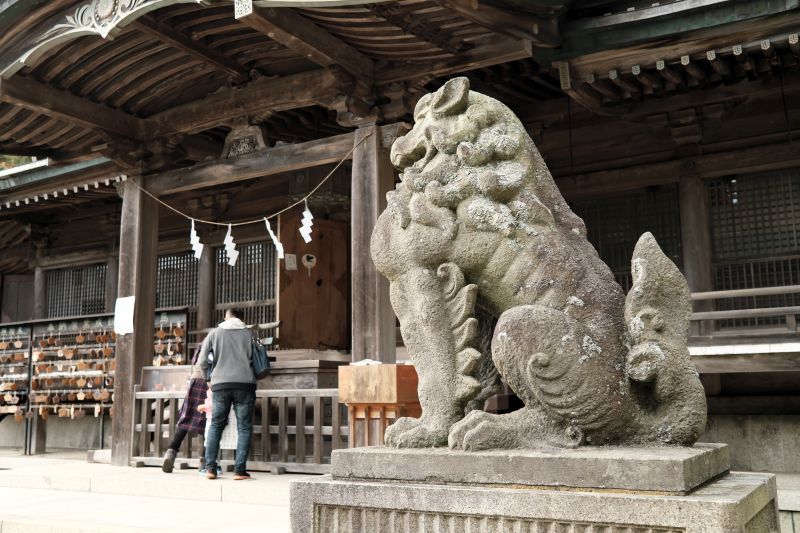
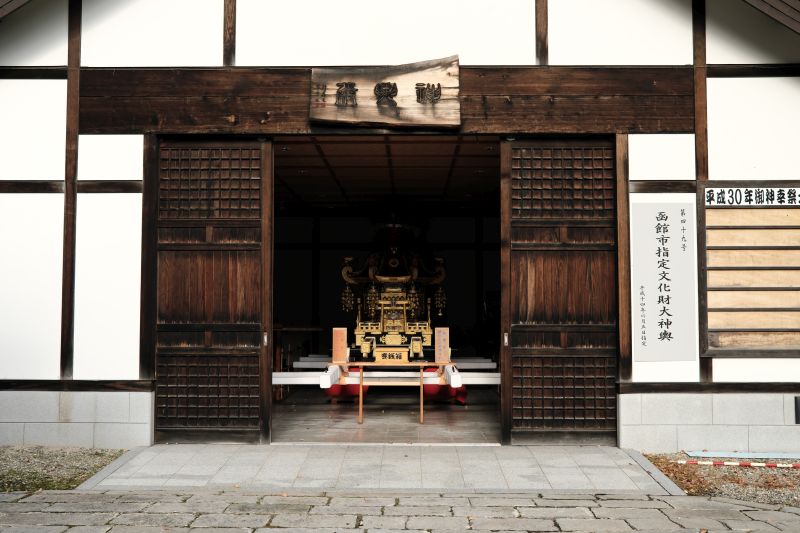
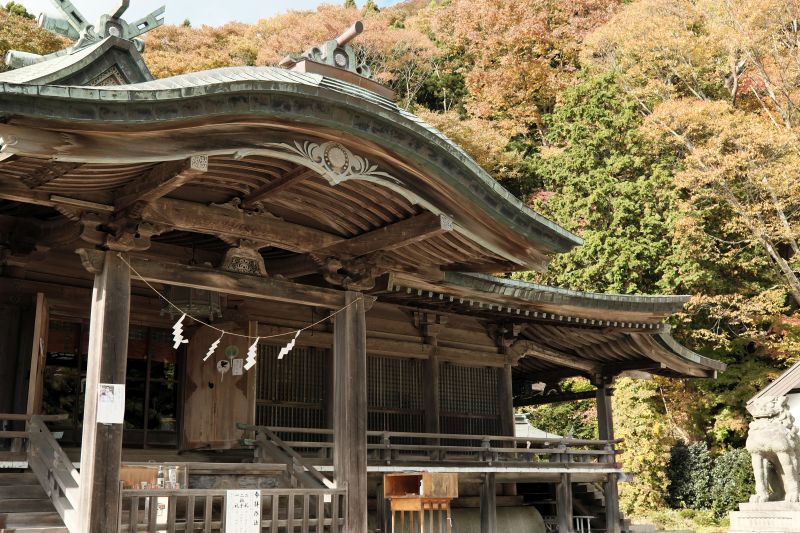
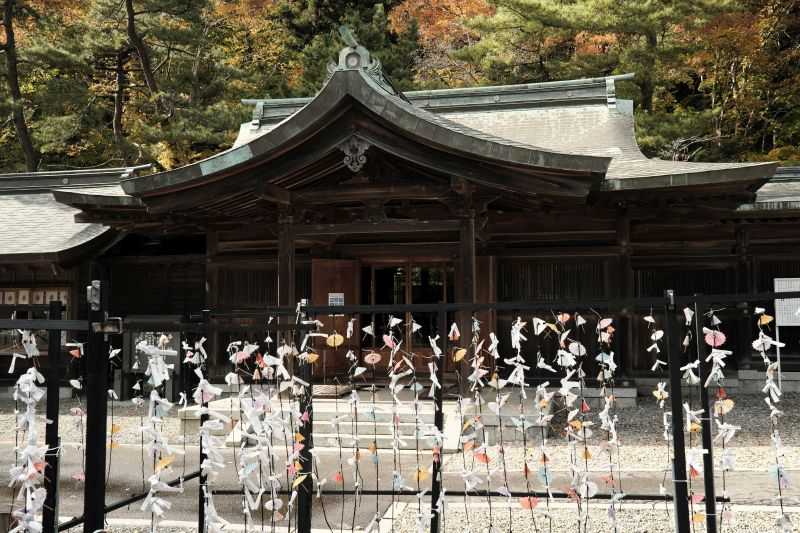
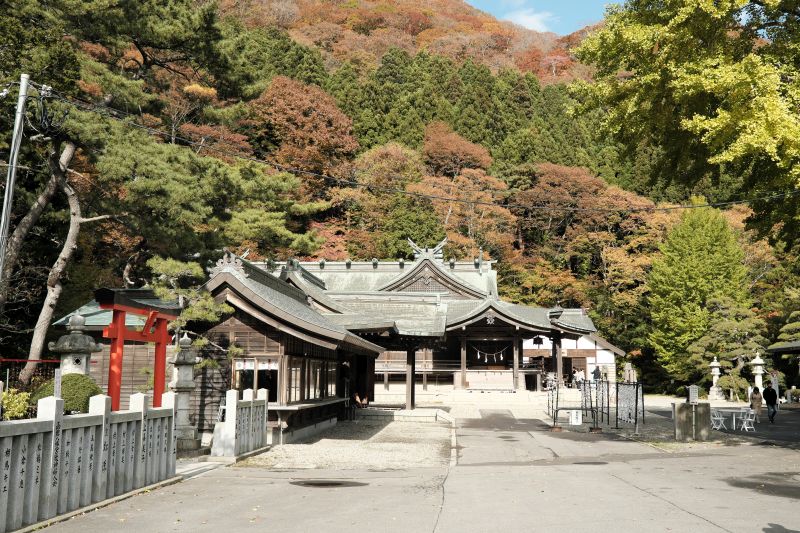
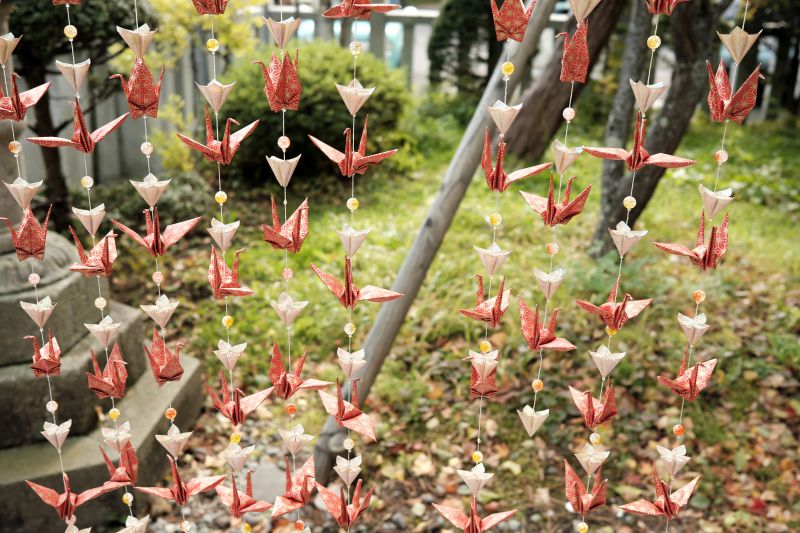
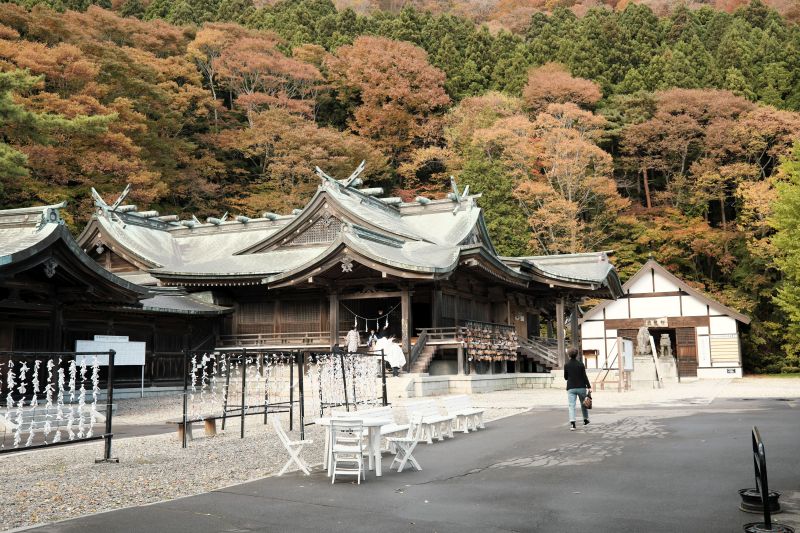
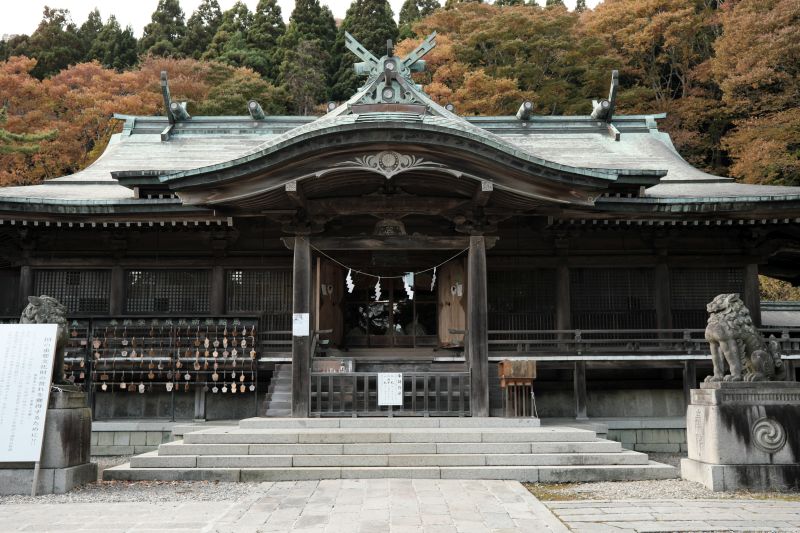
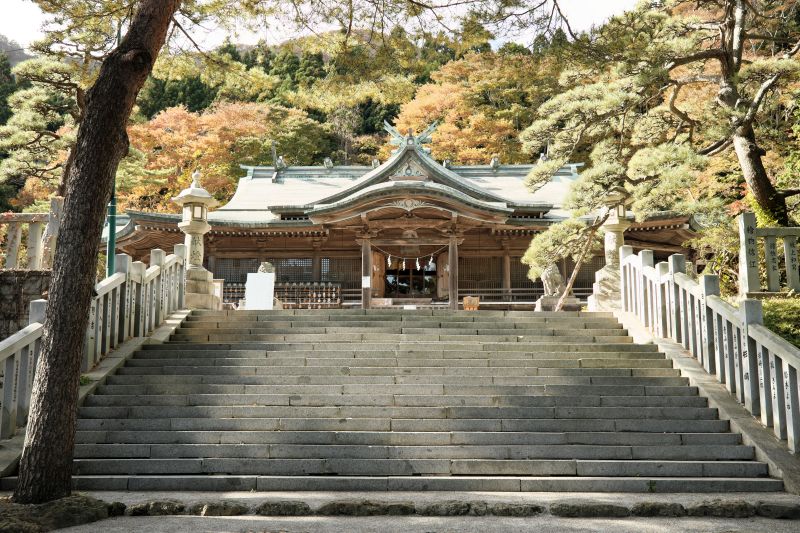
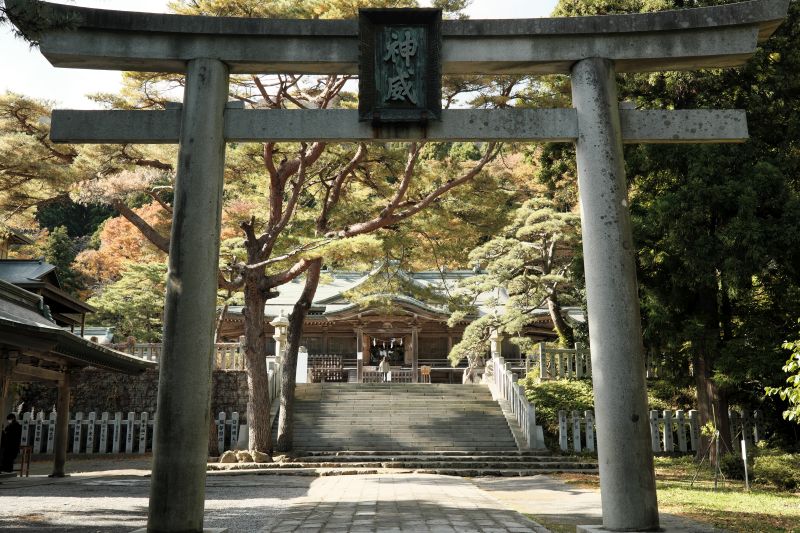
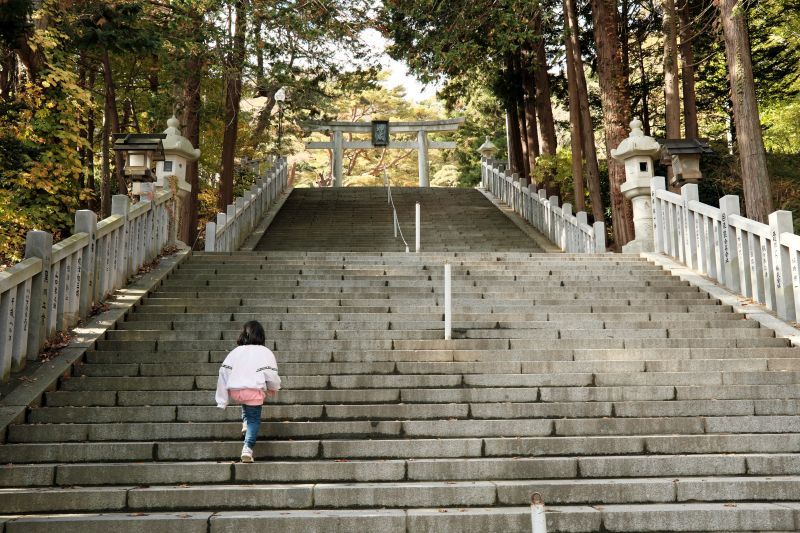
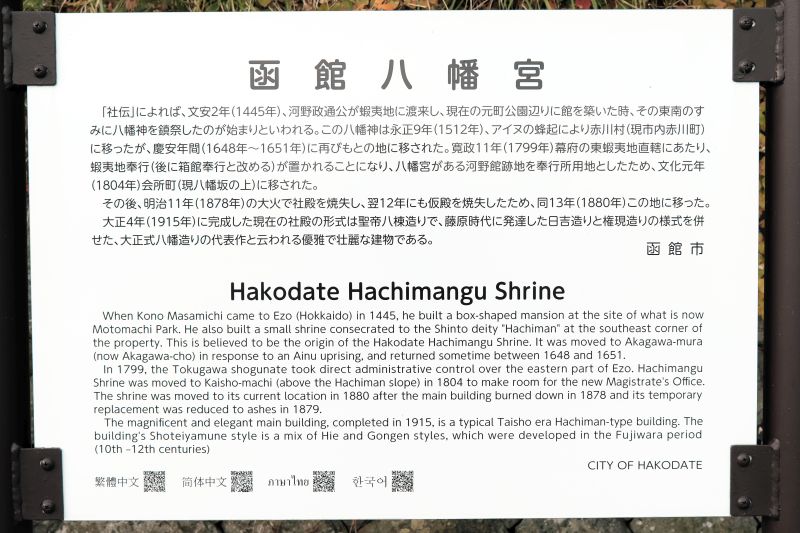
函館八幡宮
函館市
「社伝」によれば、文安2年(1445年)、河野政通公が蝦夷地に渡来し、現在の元町公園辺りに館を築いた時、その東南のすみに八幡神を鎮祭したのが始まりといわれる。この八幡神は永正9年(1512年)、アイヌの蜂起により赤川村(現市内赤川町) に移ったが、慶安年間(1648年~1651年)に再びもとの地に移された。寛政11年(1799年)幕府の東蝦夷地直轄にあたり、蝦夷地奉行(後に箱館奉行と改める)が置かれることになり、八幡宮がある河野館跡地を奉行所用地としたため、文化元年(1804年)会所町(現八幡坂の上)に移された。
その後、明治11年(1878年)の大火で社殿を焼失し、翌12年にも仮殿を焼失したため、同13年(1880年)この地に移った。
大正4年(1915年)に完成した現在の社殿の形式は聖帝八棟造りで、藤原時代に発達した日吉造りと権現造りの様式を併せた、大正式八幡造りの代表作と云われる優雅で壮麗な建物である。
Hakodate Hachimangu Shrine
CITY OF HAKODATE
When Kono Masamichi came to Ezo (Hokkaido) in 1445, he built a box-shaped mansion at the site of what is now Motomachi Park. He also built a small shrine consecrated to the Shinto deity “Hachiman” at the southeast corner of the property. This is believed to be the origin of the Hakodate Hachimangu Shrine. It was moved to Akagawa-mura (now Akagawa-cho) in response to an Ainu uprising, and returned sometime between 1648 and 1651.
In 1799, the Tokugawa shogunate took direct administrative control over the eastern part of Ezo. Hachimangu Shrine was moved to Kaisho-machi (above the Hachiman slope) in 1804 to make room for the new Magistrate’s Office. The shrine was moved to its current location in 1880 after the main building burned down in 1878 and its temporary replacement was reduced to ashes in 1879.
The magnificent and elegant main building, completed in 1915, is a typical Taisho era Hachiman-type building. The building’s Shoteiyamune style is a mix of Hie and Gongen styles, which were developed in the Fujiwara period (10th-12th centuries)

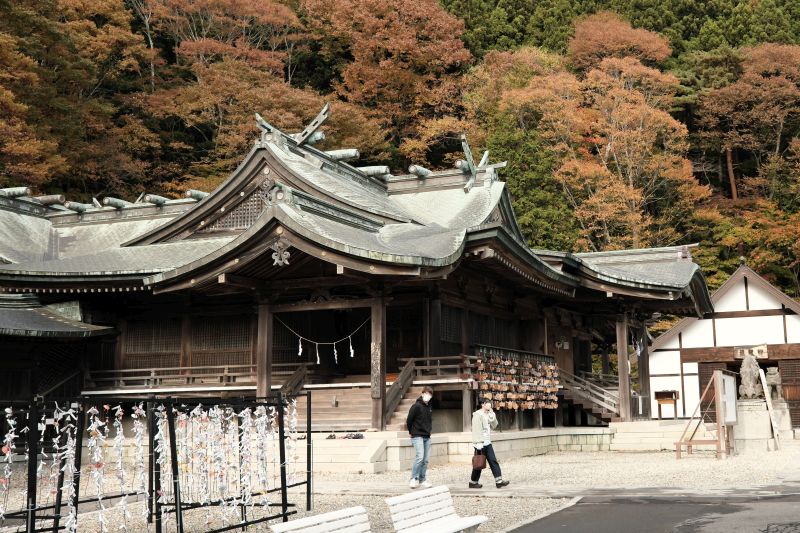


コメント